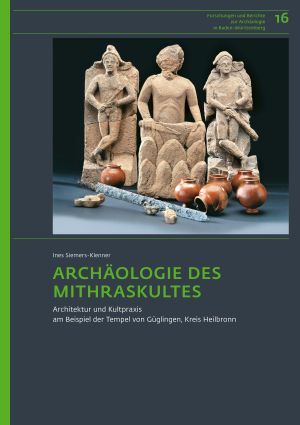
How to Cite
Published
Archäologie des Mithraskultes
Architektur und Kultpraxis am Beispiel der Tempel von Güglingen, Kreis Heilbronn
Extensive excavations in Güglingen in the Zabergäu region led to the discovery of two Mithras temples in 1999 and 2002. The first one was built of stone and had been almost entirely deprived of its furnishings. The second, smaller Mithraeum, on the other hand, preserved large parts of the inventory under its collapsed tiled roof. In this timber-framed building, stone monuments, temple dishes, personal belongings of the worshipers, various votive offerings and liturgical equipment were preserved in a hitherto unique state.
The unique archaeological record not only enabled the reconstruction of the building history of both temples, but also for the first time allowed a deep insight into the previously unknown liturgical practice of the Mithras cult. For example, the finds and features suggest that scenes from the mithraic legend were re-enacted in the temples with the use of special lighting effects. The finds from Mithraeum II confirm the practical execution of initiations in the form of trials of courage or symbolic death experiences, which had been assumed for a long time from written sources. The timber-framed building from Güglingen is also the oldest evidence of the distinctive temple type “Mithraeum” from the time around 115/125 AD and thus lends new momentum to the question of the spread of this cult.







